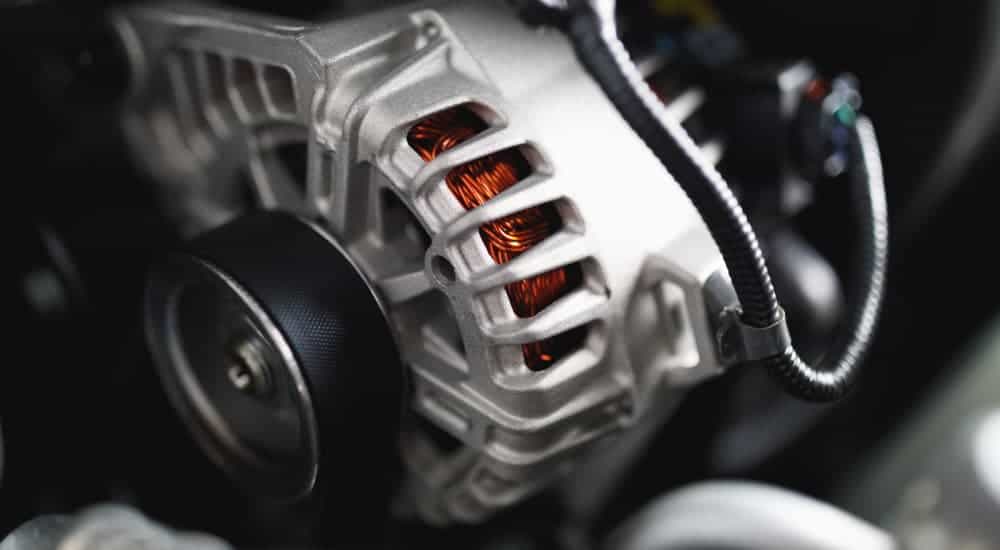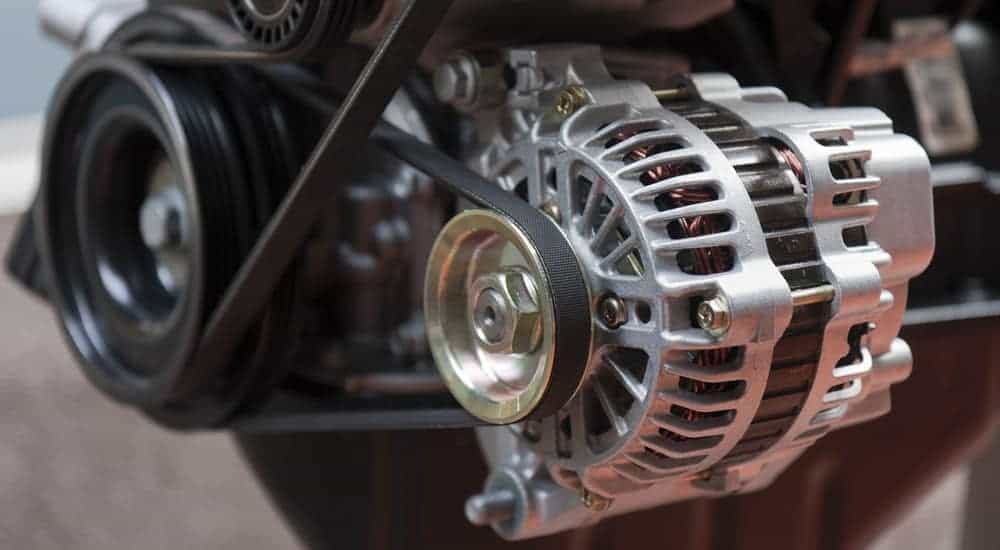Vehicles are incredible and truly amazing machines that are capable of doing so many different things. However, they require quite a large amount of various resources to function correctly. Not only do they require gasoline or diesel to power the engine, but they also need a constant supply of electricity in order to power the various electronics throughout. Electricity in a vehicle is created by three primary components; the battery, the engine, and the alternator. All of them are necessary for the car to generate electricity. But the alternator is especially essential for the vehicle’s electronics to stay on. When your ride requires car electrical repair, it will more often than not be the alternator due to its constant use. With proper care, they can last for over ten years. There are many different warning signs that you can look out for that can help determine when to replace your alternator.
What is an Alternator?
An alternator is essentially a small generator inside of a vehicle. It’s typically found in the front of a vehicle’s engine, right near the crankshaft. Its primary purpose is to take the mechanical engine and convert it into electrical energy using alternating current. This electrical energy is then converted into electricity, which powers anything from the vehicle’s lights, radio, and even the dashboard lights. The alternator also recharges the vehicle’s battery while the engine is running. It is typically bolted on to the engine and is driven by a serpentine belt.
How Does an Alternator Work?
The alternator works in tandem with the engine and the battery to supply electricity for the vehicle. The vehicle’s battery is used initially on the start-up and supplies a quick but powerful jolt of electricity, which is enough to get the engine started. Once the engine is on and running, the alternator is activated. The alternator is connected to the engine by a serpentine belt, which begins spinning the central rotor of the alternator. This rotor is magnetized and is located between two iron conductors which are called stators. The spinning of the rotor between the stators creates a spinning electromagnetic force which induces an AC voltage in the windings of the stators. The voltage is determined on the location of the spinning rotor, and fluctuates with its positioning, leading it to be an alternating current is being generated. Vehicles utilize an automatic voltage control device, which regulates the levels of the voltage, keeping them constant. This electricity is utilized by the vehicle for a variety of different electronics, as well as recharging the battery.
Symptoms of Alternator Failure and How to Diagnose
When it comes to electrical troubles, most people would assume it to be the battery; however, there are distinctive signs that would point towards alternator troubles. One of the major signs that your alternator could be failing would be your headlights and dash lights. If you notice them looking dimmer than they used to, it could be due to the alternator starting to fail. Especially if you see them getting brighter as the engine’s rpm’s increase, then it’s more than likely the alternator is on its last legs. A rather obvious sign would be a service light appearing. An alternator can cause a service light, an engine light, or even a battery light to come on. Another good sign that the alternator is failing is if the vehicle begins making odd noises. Over time, the serpentine belt that powers the alternator can become loose. This can lead it to stop spinning the alternator correctly, which results in a smaller charge.
This also can cause a loud squealing noise from time to time as the belt slips, which is a pretty good sign to get it checked out. A bad alternator can cause various electrical issues throughout the vehicle. Power seats and windows can begin to function slowly or even stop altogether. It can also cause the vehicle’s radio to turn on and off randomly. If you go to start your vehicle one day, and you find your battery dead, it could be due to the alternator failing. Cars require a lot of power in order to start, which is supplied by the battery. After starting, the battery gets recharged by the alternator. Without a functioning alternator, the battery will eventually die, leading to a dead vehicle. A bad alternator can even affect the vehicle’s engine, which can sometimes result in your vehicle stalling. Pushing fuel to the engine requires a decent amount of electrical power as well. If the alternator is dropping a charge, it can cut off fuel injection, which can quickly cause the vehicle’s engine to stall out and stop.
For dealing with engine lights, you can use an OBD2 scanner which connects to the vehicle’s computer. This will let you read all of the codes that caused the engine light. If any of the codes happen to be “P0562”, it is very likely that your alternator is failing. If there are no service lights for you to scan, you can pop the hood of your vehicle open and check the serpentine belt. If you happen to notice the belt feels loose, or if it seems burned and scraped, it could indicate alternator issues as well. If it looks all good under the hood, then you can get a multimeter which can read voltage. Turn your car off, pop the hood, and carefully connect the clamps to the battery terminals. It should read at about 12.6 volts. After doing this, start the vehicle, and do the same thing. It should jump to about 14.2 volts, which means you have a healthy battery.
Anything that is below these numbers should be worrisome, as they could indicate alternator issues. It can sometimes be challenging to determine just how long your vehicle’s alternator will last. There is not really much you can do to extend its lifespan either. There is one major thing that can help your alternator out, however, and that is LED lights. LED lights are not only much brighter than their halogen counterparts, but they also consume much less energy on average. Any less electrical strain you put on your alternator can help. There are not only LED headlights but also parking lights and signal lights, all of which can help take some strain off of the alternator.
Let Us Help
When it comes to electrical issues in cars, it can be somewhat troublesome and annoying. Vehicles require copious amounts of electricity in order to function, a bulk of which is generated by the alternator. When the alternator starts to fail, it can often be challenging to determine, but there are several different ways in which you can evaluate it. If you do happen to find yourself in need of an alternator repair, there is no better place to go in the Cincinnati area than Kings Ford. The service department is staffed by elite professionals who can diagnose any sort of issue you may find your vehicle having. They are incredibly knowledgeable in their craft and utilize only top-quality OEM parts for replacements. Electrical problems in a car are not fun, but there is no one more trained, consistent, and trustworthy in the Cincinnati area than Kings Ford.


